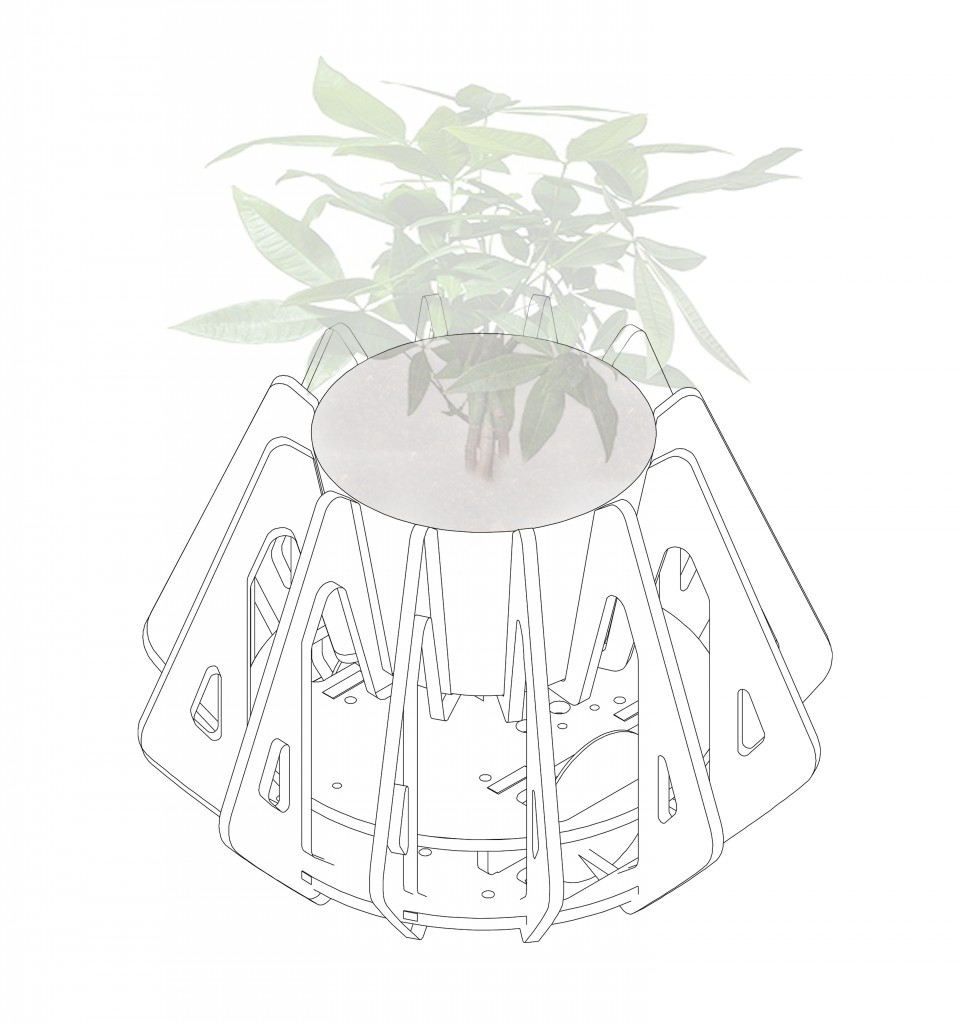Overview::
Grava is an adaptive chair that responds to the physical presence of the person sitting on it . It is based in generative design methods that utilizes material behavior based computation to allow for kinetic transformations as a passive effect.
The project would primarily investigate material behaviors and explore the possibility of using complaint mechanism within the framework of animating built environments.
Inspiration & Key Motivation
The prototype borrows from Frank Herbert’s ‘Chairdogs’ as described in “The Tactful Saboteur (1964)” and “Whipping Star (1970)”. The ChairDog as the name implies a hybrid between a pet dog and a lounge chair. The chair fits to the user and senses the users mood, and like a massage chair calms and makes the user comfortable. In Herbert’s universe the ChairDog is described in multiple stories as a ubiquitous object with multiple functional and responsive attributes :
The room’s standard model chairDogs had been well trained to comfort their masters, McKie noted. One of them nudged him behind the knees until he dropped his bag and took a reluctant seat. The chairdog began massaging his back. Obviously it had been instructed to make him comfortable while someone was summoned…
He indicated a chairdog against the wall to his right, snapped his fingers. The semi-sentient artifact glided to a position behind McKie. “Please be seated.”
McKie, his caution re alerted by Bolin’s reference to “uninhibited conversation,” sank into the chairdog, patting it until it assumed the contours he wanted.
One of the interesting attribute was that Herbert thought of the ChairDogs not as artifacts with multiple actuators but thought of them almost as if they had lifelike responsive qualities and moved without the use of motors or actuators.
The intention of embedding responsive attributes in our physical environments is a theme that has been used by a number of ther science fiction authors. J.G. Ballard concept of psychotropic house was based on a physical environment constructed using a new form of material plastex (a combination of plaster and latex) allowing for transformation and control of the interal shape of the house. The notion of physical objects physically adjusting and responding to humans can have numerous implications in the way living environments are designed and constructed.
…As I stepped forward, it jerked away, almost in alarm, the entrance retracting and sending a low shudder through the rest of the spheres……It’s always interesting to watch a psychotropic house try to adjust itself to strangers, ………
– From The Thousand Dreams of Stellavista, by J.G. Ballard.
Also Clifford Simak’s self adjusting furniture was an imposratant insoiration , with a direct impact on how Grava was conceived and designed.
The self-adjusting furniture, bought at a time when the management had considered throwing the hostelry open to the alien trade, had been out of date twenty years ago. But it still was there. It had been repainted, in soft and genteel pastels, its self-adjustment features still confined to human forms.
-From First He Died (Time and Again), by Clifford Simak.
Function:
The chair responds to the users weight and encloses the user with a soft shell when the user sits on it. It is intended to function as a personal ‘petting’ space , where the user can think and contemplate without external distraction. This privacy/ contemplation pod can be designed to respond and operate only to specific individuals based on weight calibration.
Other possible functions for this system can include
1. As a Gaming Chair with a mounted head display and suspended seating zone to augment the gaming experience .
2. Medical Applications – With the appendages having embedded body scanners
3. Super Massage Chair- integrate pneumatic appendages !
Technology Innovation
The chair is based on a process of topology optimization based complaint mechanism design . Complaint mechanisms are flexible mechanisms that can transfer input forces (such as the weight of a person sitting on the chair) at some other point to perform some usable output action (such as generating a sinusoidal motion on the chair surface ).
A system to design such mechanisms was developed in the Rhino3D/Grasshopper environment using a custom C# script . The process consists of the following steps :
1. Input two dimensional design space boundary
2. Define loads, supports and intended transformation sequences.
3. Generate topology optimization based complaint mechanism .
4. Extract contours based on stiffness gradients.
5. Define flexure hinges and rigid body material in the result.
6. Convert results for fabrication .
An interesting outcome of this process is the visual quality of the results. The skeletal outcome is very organic and reminds me of the HR Geiger’s designs or the chair that was designed for the Space Jockey






